Thinking about getting a sauna for your home? Not sure where to start? In this article, we explain the difference between a traditional steam sauna and infrared sauna and cover all the key things you need to consider when buying a sauna for your home.
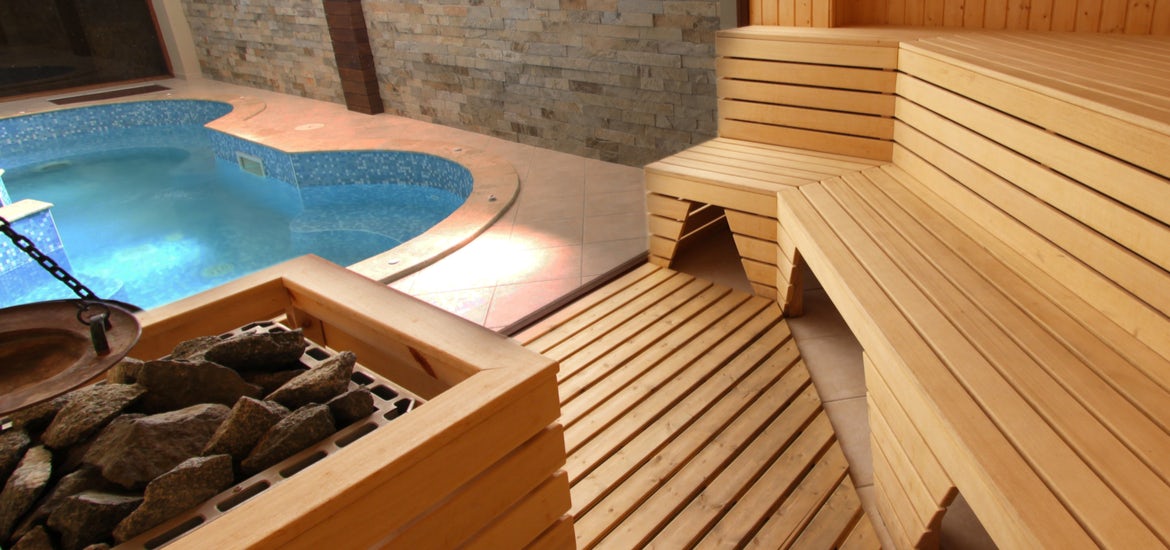
What is a sauna?
Put simply, ‘sauna’ describes any heating system intended to create profuse sweating.
Saunas are thought to have originated in Finland around 7000bc. The earliest known sauna structures were dug into the earth and lined with stone.
Today, modern saunas are typically timber-framed rooms heated with hot stones, wood stoves, hot embers, or electricity. They can be indoors or outdoors.
There are lots of different types available from traditional steam saunas and steam rooms heated with hot stones through to the latest state-of-the-art infrared therapy saunas.
Today’s high-tech saunas can feature sound systems, Bluetooth® capability and mood lighting. Then there are all the finishing touches like colour and timber choices.

What does a sauna do?
Saunas have long been used for therapeutic and relaxation purposes and have been a part of traditional medicine for many centuries.
People have known for thousands of years how beneficial ‘sauna bathing’ is for the mind, body and soul.
The high heat is believed to provide a number of wonderful health benefits including reducing stress, increasing metabolism, detoxification and relieving muscle and joint pain.
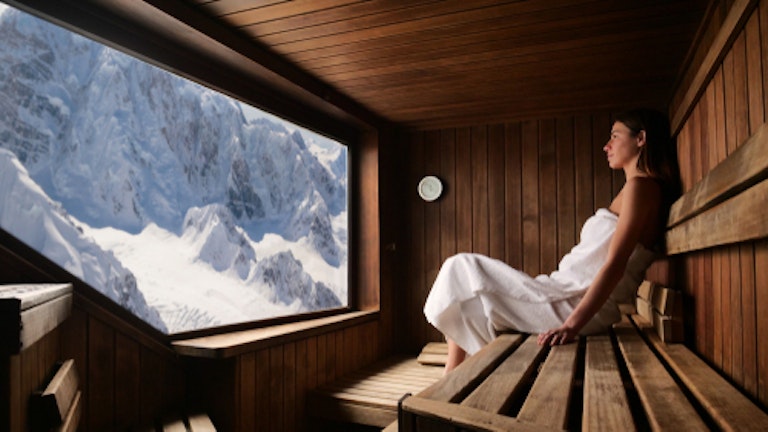
What types of saunas are there?
There are four diverse types of saunas:
- Traditional or regular sauna (also called ‘Finnish sauna’ or steam sauna)
- Dry sauna
- Steam bath or Turkish bath
- Infrared therapy sauna
Each experience varies from one type of sauna to the next.
Traditional saunas and infrared therapy saunas are the most common for home use.
Home saunas or domestic saunas can be custom-designed or pre-built. They can be installed indoors or outdoors.
The beauty of pre-built saunas is they are usually portable, generally a lot cheaper than custom-built options, can be bought ‘off the shelf’ and easily installed in around one to two hours, and come in a range of styles and sizes.
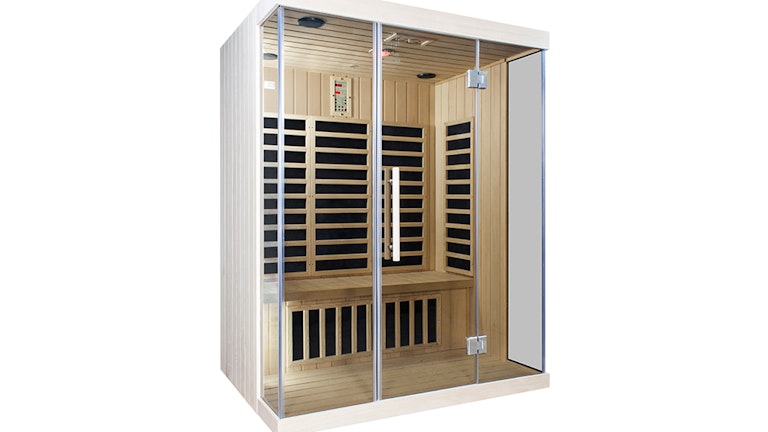
What is an infrared sauna?
An infrared sauna is a wooden cabin equipped with infrared heaters designed to relax, detoxify and heal the body.
Unlike traditional saunas that use steam or dry heat to warm a room, infrared saunas use advanced infrared heaters to warm your body directly. As your body absorbs the infrared heat, this increases thermal energy, inducing a deep and relaxing sweat.
Reduced muscle pain, better sleep, detoxification, relief from joint pain and stiffness, stress reduction and improved circulation – are all well-known benefits of infrared saunas.
Difference between steam and infrared saunas
On the surface, traditional steam saunas and infrared saunas appear similar.
But, while they both work to re-energise and relax the body – there are nine important differences you should know about before making a decision on which one to buy.
Once you know more about these differences you’ll be able to weigh up the pros and cons for yourself and make the best decision based on what’s right for you.
Keep reading to learn the top nine differences between traditional and infrared saunas and why they matter...
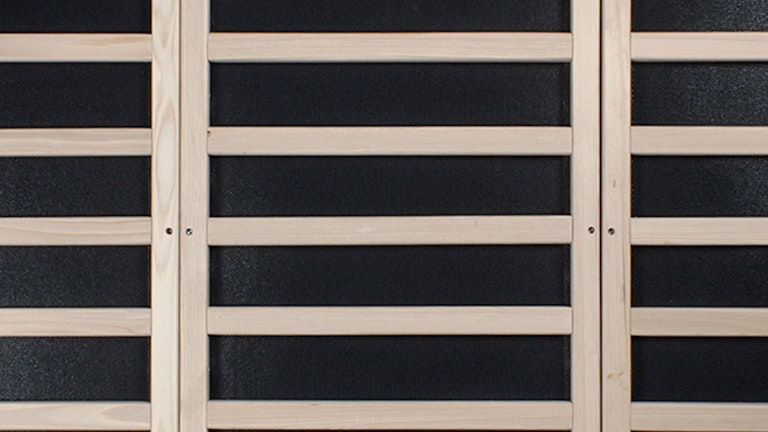
1. Heating method
The main difference between infrared saunas and traditional saunas is how they use heat.
Traditional saunas use a single heater that heats the air and that hot air heats the user.
With this type of sauna, you are seated in a wood-lined room that is heated by an electric sauna heater filled with rocks. When the rocks are heated you pour water over them to create steam.
In contrast, in an infrared sauna, the air temperature is less important than the quality of the infrared heat. Once your infrared sauna has been heating for about 15 minutes then you’re ready to get in. You will warm up with the sauna.
As your body absorbs the infrared heat, this will increase thermal energy, inducing a deep and relaxing sweat.
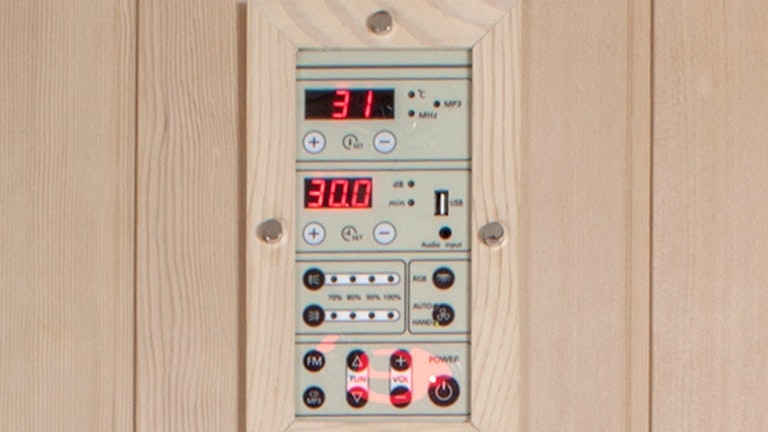
2. Temperature
Conventional ‘hot rock’ or steam saunas need to have air temperatures of around 70 to 80 degrees to induce sweat, whereas an infrared sauna’s internal air temperature can stay well below 60 degrees while creating higher levels of detoxifying perspiration.
On average, infrared saunas operate between 46 to 57 degrees while traditional saunas can get up to 85 degrees.
As the infrared environment is more tolerable, it allows you to stay in the sauna longer and get the most of out of it.

3. Health benefits
Saunas have long been used for therapeutic and relaxation purposes and have been a part of traditional medicine for many centuries.
If you are after relaxation, stress reduction and sweating for detoxification – then both traditional and infrared sauna can provide these benefits.
In either type of sauna, you can experience deep relaxation, your muscles are loosened, and aching joints will likely feel relief.
However, because of the way infrared saunas work, they’re believed to deliver
greater health benefits than traditional saunas.
Unlike traditional saunas that use steam or dry heat to warm a room, infrared saunas use advanced infrared heaters to warm your body directly.
As your body absorbs the infrared heat, this increases thermal energy, inducing a deep and relaxing sweat at a lower temperature and in turn produces a host of anti-aging and health benefits.
Proven benefits of infrared saunas include relieving stress, lowering blood pressure, relieving muscle and joint pain, weight loss, improved circulation, reducing fine lines and wrinkles, and detoxification.
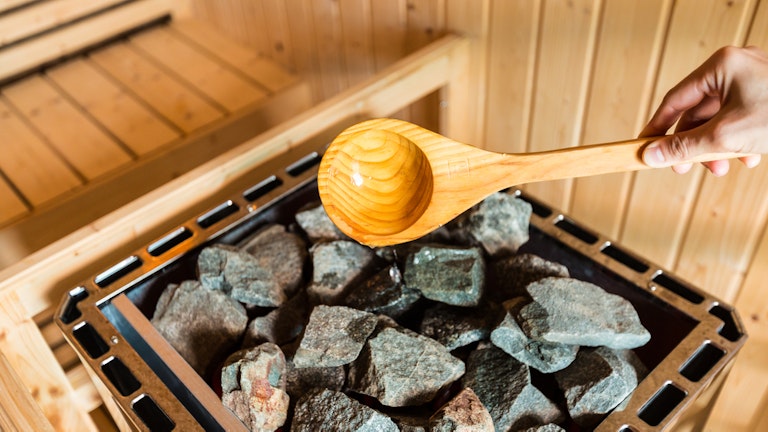
4. Heat-up time
A traditional ‘hot rock’ sauna takes between 30 and 40 minutes to heat up. During this time the rocks are heated to the ideal temperature for soft heat and soft steam.
An infrared sauna takes between 10 and 15 minutes to heat up. Since far infrared saunas heat the body directly, you can get in the sauna as soon as the heaters are up to full temperature.
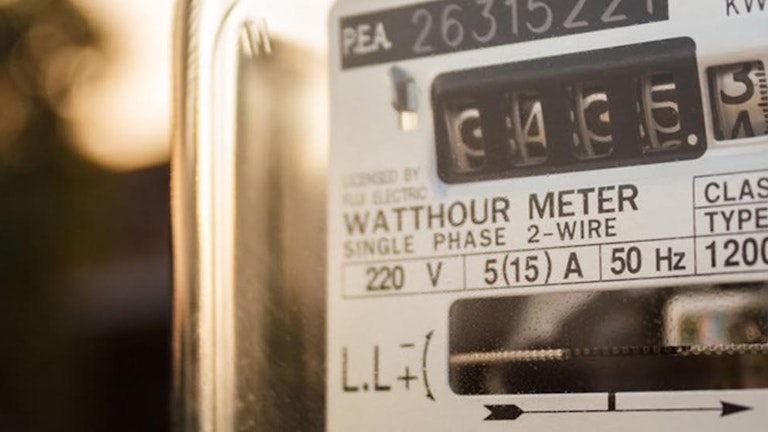
5. Running costs
How much your sauna costs to run depends on your local cost per kilowatt-hour (noted on your electric bill), the kilowatt rating of your heater, and how much you use your sauna.
Overall, infrared saunas are more energy-efficient than traditional saunas as you don’t have to wait as long before the sauna is ready to use.
On average, if you use your infrared sauna three times a week you could expect to spend around $10 a month on electricity.
In contrast, a traditional sauna with a 6kW element being used for an hour, three days a week, would be over $20 per month. An idle sauna doesn’t cost anything.
You can work out the running cost more accurately by multiplying the costs per kilowatt-hour by the heater’s rating.
6. Maintenance
When you buy a sauna you want to spend your time enjoying it – not cleaning it.
Overall, saunas are fairly low maintenance but some require more cleaning than others.
If low-maintenance is a priority for you then we recommend opting for an infrared sauna.
Infrared saunas provide dry heat so the only moisture produced is from your own perspiration - which reduces the chances of mould or mildew and makes for a cleaner, healthier environment.
In contrast, traditional steam saunas are hot, damp spaces which – while great for sweating and cleaning out your pores – is the ideal habitat for mould and mildew.
If you decide on a traditional sauna, you’ll need to be vigilant about cleaning and maintaining it to ensure it’s hygienic and safe at all times.
Regardless of the sauna type, when cleaning your sauna we recommend using only environmentally-friendly, non-toxic cleaning products.
Never use bleach or other harsh chemicals. Sit on towels to prevent the accumulation of germs or sweat stains on walls and benches.

7. The sauna experience
Another area where infrared and traditional saunas differ is in the sauna experience itself.
Traditional saunas are hot and steamy spaces that are good for short bursts of sauna sessions.
The high heat (up to 80 degrees) means they are generally only tolerable for around 20 minutes at a time. Some people like to take a cold shower or plunge in cold water after a sauna, before repeating the process.
In contrast, infrared saunas provide a dry, comfortable, relaxing heat you can enjoy for 40 minutes or more. The heat is usually kept between 50 and 60 degrees, with no humidity.
While infrared sauna heat might be lower in temperature it is more effective at inducing deep, detoxifying perspiration. Combined with the comfortable temperature, this means you can relax for extended periods and get maximum benefits from your sweat session.
When deciding which sauna experience is better, it depends on the type of heat you want and the effect you want it to have on your body.
Are you after a short, hot and steamy sweat session? Or would you prefer a longer, drier, more comfortable experience with a deeper, more intense and therapeutic sweat?
Once again, it’s down to personal preference and only you will know which suits you best. Our advice? Try before you buy and see which experience you enjoy more.
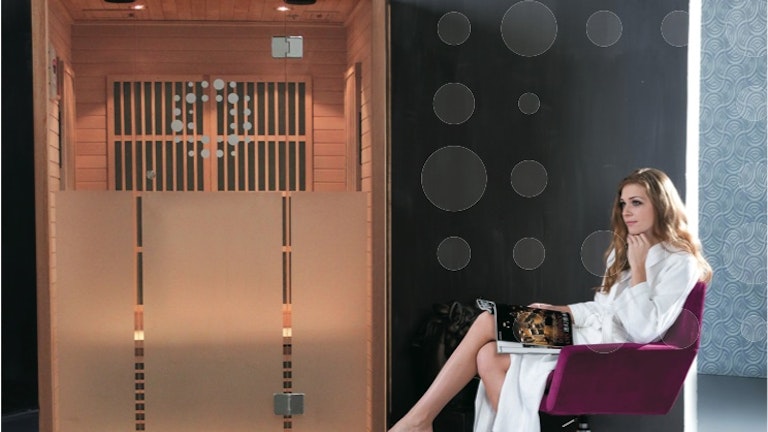
8. Installation
Installing a sauna in your home is a great investment. An in-home sauna can add value to your property and, if it’s portable, you can take it with you when you move.
When it comes to installing traditional and infrared saunas; there is a big difference between the two.
Traditional steam saunas need to be professionally installed due to their plumbing, drainage, ventilation and electrical requirements. This all adds to the final price of the sauna and is why they can be up to three to four times more expensive than infrared alternatives (learn more about sauna prices below).
On the other hand, most infrared saunas come in pre-built or portable form and assembling them is quite easy to do yourself. It usually takes two people about one to three hours to assemble an infrared sauna using just a few common hand tools.
The beauty of infrared saunas is you get what you pay for as you’re not having to pay thousands of dollars extra in installation costs.
Given the significant costs involved with installing a traditional steam sauna, you’d have to ask yourself if you’re getting value for money. We would suggest you aren't.
9. Sauna cost and prices
The ultimate price of a sauna depends on the type of sauna you choose, the unit’s size, the type and quality of wood, quality of equipment (including heaters), and features – which are many.
Infrared sauna prices cost around $2,500 for an entry-level unit, $7,000 to $10,000 for high-quality, mid-market saunas and $10,000+ for premium models.
Traditional steam saunas are significantly more expensive than infrared saunas, largely because (as explained above) they need to be professionally installed.
For this reason, steam saunas can cost anywhere from $10,000 to $30,000 – around two to three times more than equivalent infrared units.
Put another way – you could pay $8,000 for a quality, mid-market infrared sauna with all the extra benefits infrared offers or, you could buy a mid-range steam sauna for $15,000 to $20,000. In our opinion, that seems like a lot of extra money for hot air and steam!
In summary, we think value for money is certainly something to factor in when comparing infrared and traditional saunas. We would argue that an infrared sauna is a better investment as you’re getting many more benefits at a lower cost.

Traditional sauna pros and cons
Traditional sauna: Pros
- Authentic sauna experience. With their hot and steamy environment, traditional saunas are much closer to the original Finnish saunas of old. If you can’t imagine a sauna without high heat and steam then this is a definite plus.
- Humidity control. With a traditional sauna, you can adjust the humidity by using more or less water. Find the level of humidity that is comfortable for you
- Outdoor use. Traditional saunas are well suited to the outdoors in very cold climates.
Traditional sauna: Cons
- Longer to heat. It takes about 30 to 45 minutes for a traditional sauna to heat up. Whereas infrared saunas are ready to use in about 10 to 15 minutes.
- Shorter sessions. Due to the high heat, a typical session is about 10 to 15 minutes.
- Higher running costs. Traditional saunas cost significantly more to operate than infrared. The operating costs can be two to three times more than infrared saunas.
- Installation costs. Steam saunas need to be professionally installed and plumbed in by a professional, significantly increasing the overall cost.
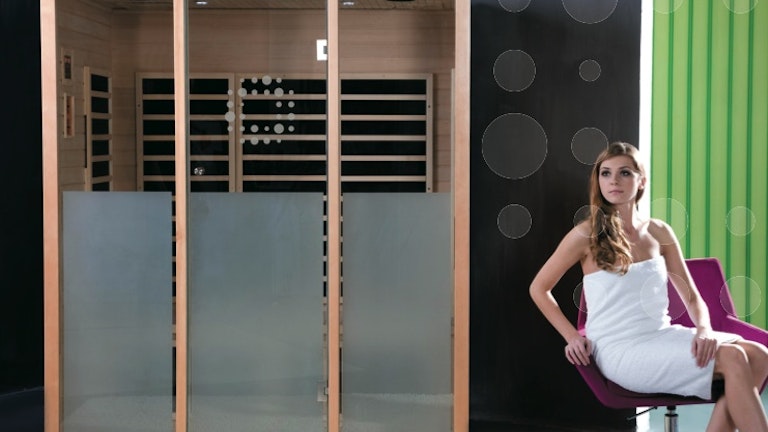
Infrared sauna pros and cons
Infrared sauna: Pros
- Faster heat-up time. Infrared saunas are ready to use in about 15 or 20 minutes, compared with traditional saunas which take about 30 to 40 minutes to heat up.
- Cheaper running costs. Infrared saunas cost about half as much to run as traditional electric saunas.
- Longer sessions. Because the air temperature is lower, you can stay in an infrared sauna longer – a typical session is 30 to 40 minutes.
- Health benefits. Due to the way infrared works and the fact you can stay in longer, the health benefits are increased.
- Easy to install. A pre-built infrared sauna can be installed in around one to two hours. Once it’s set up you can usually just plug it into your household electrical socket.
- No venting. Because they are a dry heat and do not have steam, infrared saunas can be used indoors without the need for venting.
Infrared sauna: Cons
- No humidity. This could actually be a pro or a con, depending on your preferences. For those who prefer the steamy environment of a traditional sauna, a dry sauna could be a deal-breaker. However, if you prefer your saunas on the dry side, then the lack of humidity is a bonus.
- Limited outdoor use. Infrared saunas and are not suited to extremely cold outdoor climates. They can be installed outdoors but should be under shelter.
Infrared or steam sauna?
Choosing which type of home sauna to buy depends on what you’re looking for and which sauna will best meet your wellbeing needs.
Certainly, the hot and steamy atmosphere of traditional saunas is a major drawcard for people seeking an authentic ‘Finnish’ sauna experience.
However, while traditional steam saunas provide what many consider to be a ‘true’ sauna experience – they tend to be more expensive, have higher running costs, and require more maintenance than infrared alternatives.
As explained above, the actual sauna experience between infrared and traditional steam saunas is quite different.
The high temperatures of steam saunas mean you can usually only tolerate short bursts of sauna time (around 15 to 20 minutes) before needing a break. Infrared saunas, on the other hand, have a lower heat so you can stay in for twice as long per session.
In terms of health benefits; while the hot air from a traditional steam sauna creates surface sweat, the gentle heat from infrared saunas raises the core body temperature - delivering a much deeper sweat, more intensive detoxification process and increased health benefits.
In summary, if like many people you can’t imagine a sauna without hot rocks, steam and high heat – then a traditional sauna could be the best option for you.
However, if you find the heat of traditional saunas a bit much, and health and wellbeing are a priority for you – then you might find an infrared sauna is an ideal option.
Regardless of the type of sauna you choose, we always recommend that you consult with your medical practitioner before buying any sauna.
In conclusion
With so many options to choose from, buying a sauna can be a daunting task.
The truth is, both traditional and infrared saunas have pros and cons. The goal is finding a sauna that matches your health and wellbeing goals, fits the space available and suits your budget.
The most important thing is to buy the sauna you’ll use the most. Ask yourself the following questions:
- What do you need it for?
- What type of heating and temperature do you like?
- What health benefits are you seeking?
- How much do you want to pay?
- What size sauna do you need?
- How much time do you want to spend looking after a sauna?
Once you know the answers to these questions you’ll have a much better idea of the type of sauna that will work best for you and that you will use and enjoy for many years to come!
